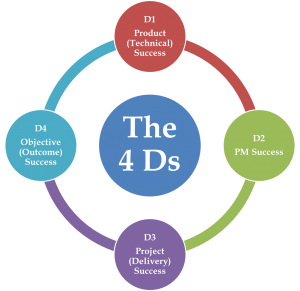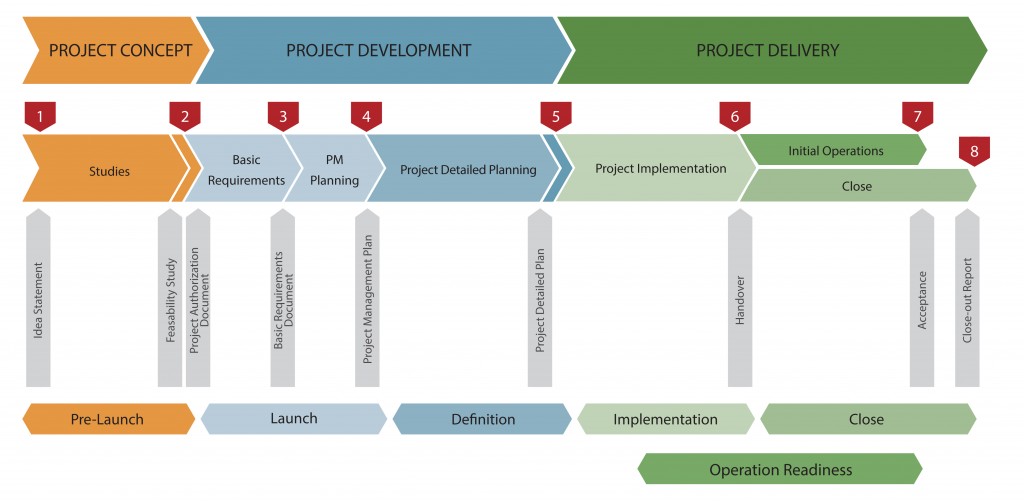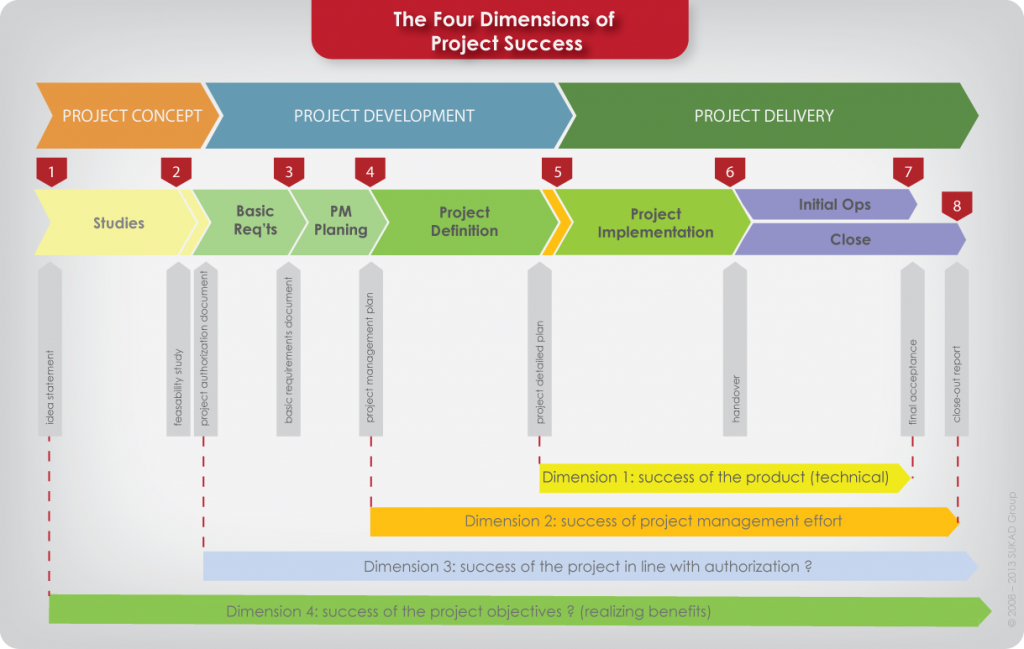This is the second article in a four-article series on the subject of project success.
Introduction
In the previous article, we stated that we are discussing project success,
- From an organizational perspective; not individuals, and
- From the owner perspective; not the service provider.
With the above in mind, what are the four dimensions?
The Four Dimensions of Project Success
In this post, we present four measures of project success, or what we call “The Four Dimensions of Project Success”. These dimensions are derived and linked to the SUKAD internally developed project management applied methodology, The Customizable and Adaptable Methodology for Managing Projects™ (CAM2P™). This subject is also a chapter in our future book, Redefining the Basics of Project Management, and forthcoming eBook Series on Project Management.
CAM2P™ Brief Overview
We will not go into CAM2P™ detail at this time; we will only present what is necessary to understand the dimensions of project success.
CAM2P™ is a project life span (project life cycle) based project management methodology where we define the project life as starting from the idea (not the charter) and ends when the project is closed.
Notice the emphasis on ‘ends’. We do so because from the project manager perspective the project typically ends at closure. Further, from the organizational perspective, although the project’s work ends with closure, the business project, or maybe we should say the “venture”, does not end until sometime in the future, maybe as late the end of the product life. This distinction is very important to understand the dimensions of project success.
We know that a few PMPs (project management professionals), might say “PMI does not say this”. Our response, read the PMBOK® Guide again, or waits and read our last article, in this series.
The following is an image of the CAM2P™ Model including its phases, stages, stage gates, and major deliverables. The phases is the top row, the deliverables are the upward arrows, the stages are the lower row but also the middle row, and finally the stage gates are the red symbol with numbers at the end of the stages.[1]
For further reading on CAM2P™, please refer to our website and The Inheritance, a book we published on the subject.
The Four Dimensions in Graphical Format
Product Success ~ Technical
The first dimension is “Success of the product”.
The main purpose of this dimension is to measure the success of delivering the product (facility, software application, book, or any other project) in accordance with the project detailed plan, which includes the various performance requirements, such as scope, specifications, and functionality.
We should be able to measure this dimension at the end of the project life span with the acceptance of the product; at stage gate 7 in the CAM2P™ Model.
Project Management Success
This dimension is to assess, whether the project was managed successfully, and delivered in accordance with the project management plan. The focus here is often on time and cost but should not be limited to these two parameters. In other words, did we deliver the project in accordance with the organizational project management standards and per the established performance metrics?
We can measure this dimension during the project closure; at stage gate 8, per the SUKAD standard CAM2P™ Model.
Project (Delivery) Success
This dimension is somewhat difficult to explain, but we can say it is about: did we deliver the project per the project authorization document, or project charter? In some cases, we can merge this with previous measure, and in other instances we can merge it with the fourth dimension. Simplistically, one can say the project is a success, once we achieve both product and project management success. However, the question is usually deeper than this.
Typically, it is also not easy to measure this dimension at closure and would require revisiting the project outcome sometime after project closure. This ‘sometime after’ could be weeks, months, or years; it is a function of the project’s environment.
Objective (Outcome) Success
This fourth dimension is specific to assess if the project outcome resulted in delivering the expected benefits that was outlined at the idea statement and drove the project launch. Notice the use of the term outcome and not output. Output is the product, which is the first dimension. On the other hands, outcome is related to achievement, realization, of benefits.
This can be difficult to assess and most likely we will not be able to assess it at project close. Therefore, it is the organization responsibility to measure this at a point in time where we can meaningfully assess the outcome and determine if we realized the benefits.
Again, some will say this is not in the PMBOK® Guide, and we say read it again. Further, the PMBOK® Guide is not the only authority on project management nor is it a complete guide that covers all aspects. This is not our opinion only; it is what PMI clearly state in the PMBOK® Guide, notice page and chapter 1.
In Closure
- We can perform the measurements for the first two dimensions by the time the project is closed – at the end.
- We are not likely able to measure the third and fourth dimensions until a period of time after project closure, which can be months or years and in some cases only at the end of the product useful life.
In the next post, we will give an example to demonstrate these dimensions.





Trackbacks/Pingbacks